|
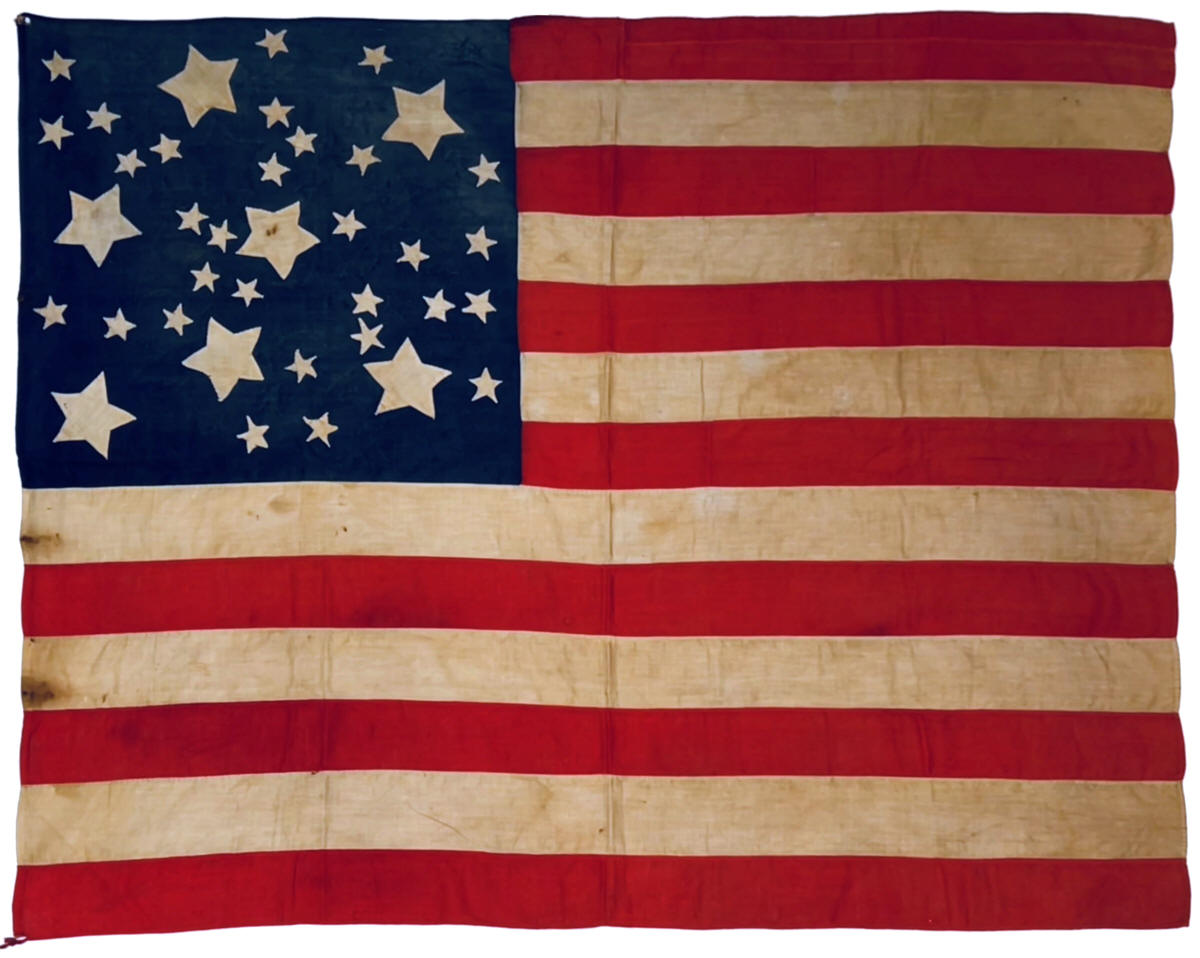

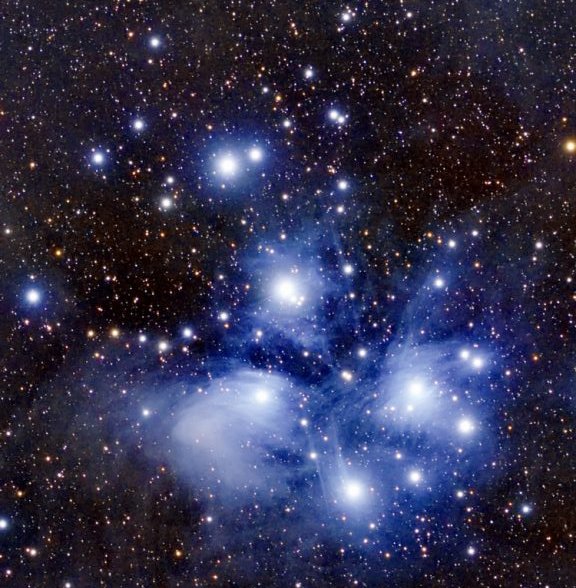
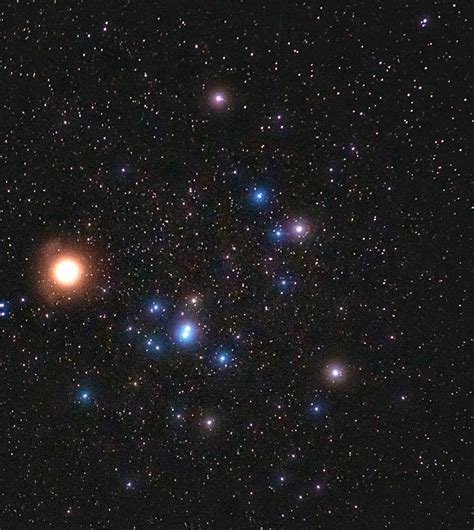
The
Pleiades
The Hyades
Some of the most unusual
and creative patterns on 19th century American flags are
seemingly random configurations of stars.
Not only are they visually intriguing and
memorable, but they also make you wonder what may be
behind the pattern and why someone would make a flag in
a particular way. The first clue to the meaning in the
stars on this flag is the different sizes of stars. This
correlates to an "asterism", or a particularly
identifiable part of a star constellation. Asterisms
such as the bowl of the Big Dipper or the belt of Orion
the Hunter are easily identifiable
in the sky due to the large, primary stars in a unique
formation that stand
out in the field of smaller stars. One of the most
famous asterisms is the Pleiades, also known as the
"Seven Sisters", which is a small, tight star cluster
visible to the naked eye. Galileo drew the Pleiades in
1610 when he first observed them in his telescope, and
you can see elements of his sketch in the star pattern
on the front of the flag. Note, for example, the arch of
stars that matches the arch on the left of the flag. The
maker compressed the star formation, but it clearly is
representative of the Pleiades.
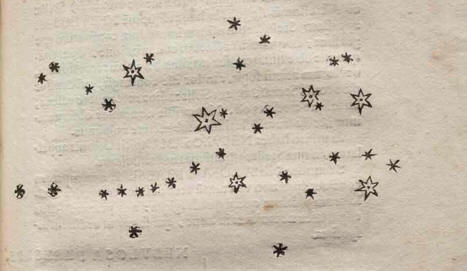
Galileo's 1610 sketch of the Pleiades
contains 36 stars, including the seven largest
stars and the arc of stars seen also on the 37 Star
flag.
The reverse of the flag shows the Hyades,
a neighbor of the Pleides, with its recognizable,
prevalent V shaped pattern of large stars. Both the
Pleiades and Hyades are located very close to each
other, in the same neighborhood of the night sky. They
are seen together in the image below.
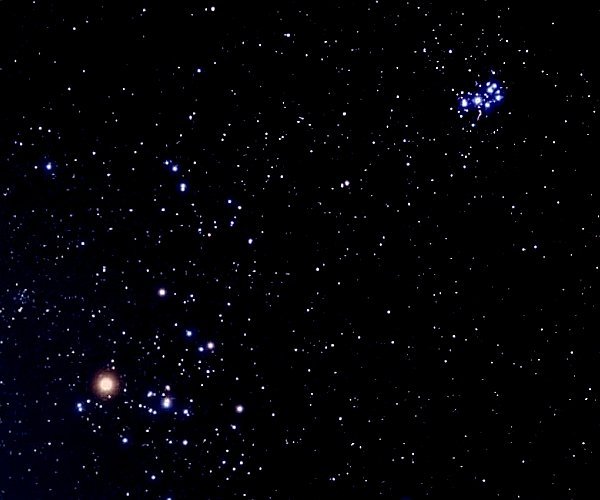
The Pleiades, top right, and the
Hyades, bottom left, are in close visual proximity to
each other in the night sky.
Even the maker's selection of a deep,
dark blue canton color supports the intention of making
a constellation flag. The only other constellation flag
that I'm aware of that features an asterism is the
Abolitionist Flag,
IAS-00400, which depicts the bowl of the Big Dipper
and the North Star. Overall this beautiful flag is an
extraordinary and unique American flag that literally
reflecting the guidance of the Flag Act of 1777 that
describes the "stars, white in a blue field,
representing a new Constellation." It is an
exceptionally rare, unique, and fascinating flag to
behold. |

